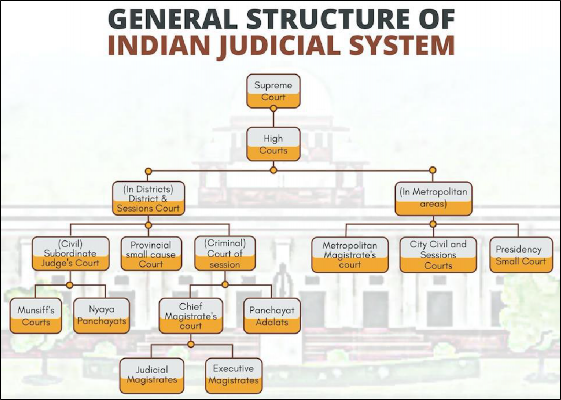2.1. General Structure of Judicial System
Indian Constitution has established an integrated judicial system with Supreme Court at the top, followed by high courts and subordinate courts. This unified judicial system enforces both central laws as well as state laws. This integrated judicial system of India has been adopted from the Government of India Act, 1935.
Articles 124 to 147 of the Indian Constitution deal with organization, independence, jurisdiction, powers, procedures etc. of the Supreme Court. Parliament has the power to make laws regulating constitution, organization, jurisdiction, and powers of the Supreme Court.

The architecture of subordinate judiciary varies across states and are broadly classified as shown in the above figure. At the lowest stage, two branches of justice-civil and criminal are bifurcated. The Panchayat courts are functioning in civil and criminal areas under various regional names like Nyaya Panchayat, Panchayat Adalat, Gram Kutchery etc.
